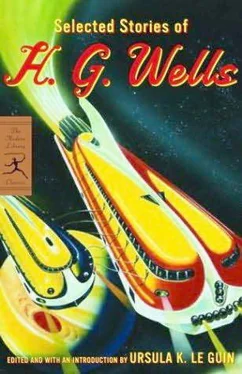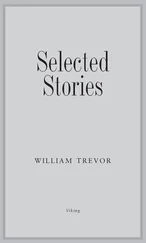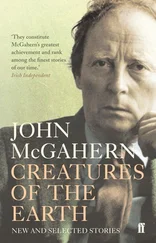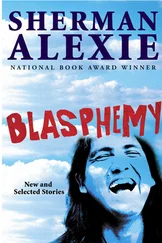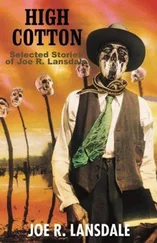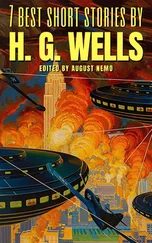Pallid to the centres of their souls, these two survivors climbed slowly to the crystalline ridge and crouched upon it.
And when some hour or so later that swirling veil of mist and dust had grown thinner and they could venture to move and plan what they would do, Nunez saw through a rent in it far away across a wilderness of tumbled broken rock and in a V-shaped cleft of the broken mountains, the green rolling masses of the foothills, and far beyond them one shining glimpse of the ocean.
Two days later he and Medina-saroté were found by two hunters who had come to explore the scene of this disaster. They were trying to clamber down to the outer world and they were on the verge of exhaustion. They had lived upon water, fern roots and a few berries. They collapsed completely when the hunters hailed them.
They lived to tell their tale, and to settle in Quito among Nunez’s people. There he is still living. He is a prosperous tradesman and plainly a very honest man. She is a sweet and gentle lady, her basket-work and her embroidery are marvellous, though of course she makes no use of colour, and she speaks Spanish with an old-fashioned accent very pleasant to the ear.
Greatly daring, I think, they have had four children and they are as stout and sturdy as their father and they can see.
He will talk about his experience when the mood is on him but she says very little. One day however when she was sitting with my wife while Nunez and I were away, she talked a little of her childhood in the valley and of the simple faith and happiness of her upbringing. She spoke of it with manifest regret. It had been a life of gentle routines, free from all complications.
It was plain she loved her children and it was plain she found them and much of the comings and goings about her difficult to understand. She had never been able to love and protect them as she had once loved and protected Nunez.
My wife ventured on a question she had long wanted to ask. “You have never consulted oculists,” she began.
“Never,” said Medina-saroté. “I have never wanted to see. ”
“But colour—and form and distance!”
“I have no use for your colours and your stars,” said Medina-saroté. “I do not want to lose my faith in the Wisdom Above.”
“But after all that has happened! Don’t you want to see Nunez; see what he is like?”
“But I know what he is like and seeing him might put us apart. He would not be so near to me. The loveliness of your world is a complicated and fearful loveliness and mine is simple and near. I had rather Nunez saw for me—because he knows nothing of fear.”
“But the beauty!” cried my wife.
“It may be beautiful,” said Medina-saroté, “but it must be very terrible to see.”
URSULA K. LE GUIN writes in various modes, including realistic fiction, science fiction, fantasy, books for children and young adults, screenplays, essays, and poems. As of 2004 she has published nineteen novels, over a hundred short stories, twelve books for children, three collections of essays, five volumes of poetry and four of translation.
THE MODERN LIBRARY EDITORIAL BOARD
Maya Angelou
A. S. Byatt
Caleb Carr
Christopher Cerf
Ron Chernow
Shelby Foote
Charles Frazier
Vartan Gregorian
Richard Howard
Charles Johnson
Jon Krakauer
Edmund Morris
Joyce Carol Oates
Elaine Pagels
John Richardson
Salman Rushdie
Oliver Sacks
Arthur M. Schlesinger, Jr.
Carolyn See
William Styron
Gore Vidal
OTHER MODERN LIBRARY PAPERBACK CLASSICS BY H. G. Wells
The First Men in the Moon
INTRODUCTION BY URSULA K. LE GUIN
0-8129-6831-X; trade paperback; 272 pp.
The Invisible Man
INTRODUCTION BY ARTHUR C. CLARKE
0-8129-6645-7; trade paperback; 192 pp.
The Island of Dr. Moreau
FOREWORD BY PETER STRAUB
0-375-76096-2; trade paperback; 240 pp.
The Time Machine
INTRODUCTION BY URSULA K. LE GUIN
0-375-76118-7; trade paperback; 136 pp.
Tono-Bungay
INTRODUCTION BY ANDREA BARRETT
0-8129-6750-X; trade paperback; 400 pp.
The War of the Worlds
INTRODUCTION BY ARTHUR C. CLARKE
0-375-75923-9; trade paperback; 224 pp.
When the Sleeper Wakes
INTRODUCTION BY ORSON SCOTT CARD
0-8129-7000-4; trade paperback; 304 pp.
Available at bookstores everywhere
www.modernlibrary.com
THE MODERN LIBRARY NEWSLETTER

HERBERT GEORGE WELLS—novelist, social critic, and visionary futurist who became one of the most prolific and widely read writers of his generation—was born in the London suburb of Bromley, Kent, on September 21, 1866. He came from a lower-middle-class background and grew up in circumstances of genteel poverty that would not have seemed out of place in a novel by Dickens. His father was at various times a gardener, professional cricket player, and shopkeeper; his mother was a housekeeper and former lady’s maid. The youngster, nicknamed Bertie, became an avid reader at the age of seven while lying bedridden with a broken leg.
Although he left school to become a draper’s apprentice at fourteen, Wells later won a scholarship to the Normal School of Science in South Kensington. There he studied zoology under T. H. Huxley, a noted disciple of Darwin who instilled in Wells a belief in social as well as biological evolution. Wells’s first prophetic work, “A Tale of the Twentieth Century,” was published in 1887 in the Science Schools Journal. Upon graduation from the University of London in 1890 he was a tutor until chronic ill health made him decide to make a serious attempt at being a writer. He brought out A Text-Book of Biology (1893) and began contributing articles and fiction to magazines such as the Pall Mall Gazette. Impoverished and unhappily married, Wells eloped with Amy Catherine (“Jane”) Robbins, a former student of his, whom he later married and by whom he had two sons.
The serialization of The Time Machine in 1895 made Wells famous overnight. A string of other scientific romances—including The Island of Dr. Moreau (1896), The Invisible Man (1897), The War of the Worlds (1898), When the Sleeper Wakes (1899), and The First Men in the Moon (1901)—consolidated his reputation.
A socialist who believed in the perfectibility of mankind, Wells focused on utopian social and political themes in works of nonfiction beginning with Anticipations (1901), The Discovery of the Future (1902), Mankind in the Making (1903), A Modern Utopia (1905), and The Future in America (1906). Wells joined the Fabian Society in 1903 but left after fighting an unsuccessful war of wit and rhetoric over its policies with George Bernard Shaw.
Tired of being labeled “the English Jules Verne,” Wells wrote two popular comic novels featuring resilient Cockney heroes who triumph over adversity, Kipps (1905) and The History of Mr. Polly (1910). The latter underscored one of his most basic themes: “If the world does not please you, you can change it. ” A liaison with the young Fabian Amber Reeves inspired the novel Ann Veronica (1909) and produced a daughter, Anna Jane. Also published in 1909 was Tono-Bungay, a panoramic if scathing view of Edwardian England that many regard as his greatest novel.
Читать дальше
